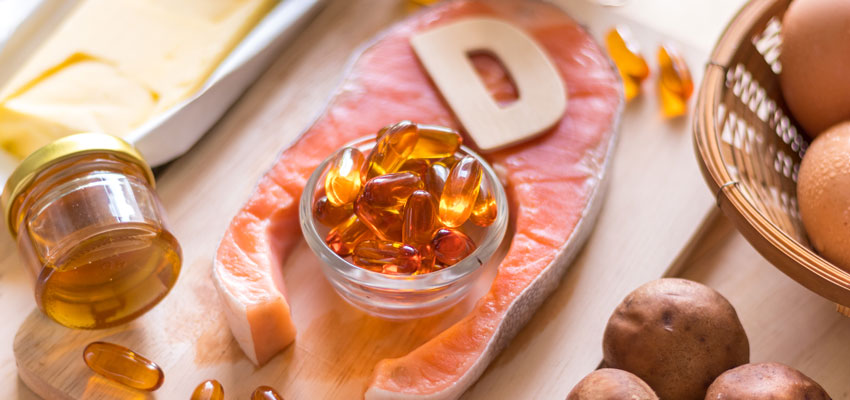In the spring of 2021, the German Consumer Organizations conducted a close examination of foods fortified with vitamin D and frequently found overdoses.(1)
Vitamin D3 is formed to 80%-90% by endogenous synthesis in the human skin when exposed to sunlight (UV radiation). Temporary deficiency may occur during the dark season and in people who rarely spend time outdoors. Only about 10-20% of the daily requirement is covered by food. The individual vitamin D status can be checked by means of a blood test and, if necessary, a high-dose vitamin D preparation can be prescribed by a doctor for a limited period, e.g. in the case of osteoporosis risk.
A lot helps a lot?
However, the majority of people take one of the countless freely available multivitamin preparations as a preventive measure without prior diagnosis. In addition to dietary supplements, foodstuffs are now also enriched with minerals and vitamins in order to suggest an "added value" to consumers. In the worst case, the daily intake then adds up and exceeds and exceeds the recommended daily requirement, especially in children.
It has long been known that even vitamins should not be supplied to the body in arbitrary quantities. In the event of an overdose, there is a risk of undesirable side effects. So "Much helps much" is not a good recommendation when it comes to vitamins and trace elements.
Anyone who is healthy, has no proven deficiency, eats a balanced diet, and spends regular time outdoors need not fear a vitamin D deficiency.
The European Regulation (EC) 1925/2006 (Fortification Regulation)(2) does not yet set any binding maximum levels for vitamin supplements. Only at national level have some EU states issued their own regulations for individual foods.
In their market check of 112 samples of a wide variety of foods fortified with vitamin D, the consumer centers found that 61 samples exceeded the recommended intake level of the BfR (Federal Institute for Risk Assessment). We refer to the cited study for the specific results and their interpretation. However, it should be remembered that specification information of vitaminized foods and food supplements must always be correct. In addition to the content specification, information on the utilization of the daily recommended intake at an underlying (realistic) consumption level must also be provided. Overdosing is indeed common in order to guarantee the declared content until the shelf life is reached. Until comprehensive legally binding EU regulation is in place, manufacturers should follow national regulations or, for guidance, the scientifically based recommendations of e.g. the BfR(3).
In a statement on the cited publication of the consumer associations, the German Food Association (BLL) pointed out that parts of the population are affected by a vitamin D deficiency and that, in the BLL's view, an addition of the vitamin to food would be unfairly defamed.(4)
YOUR PLUS: AGROLAB LUFA in Kiel is one of the leading European laboratories in the field of vitamin analysis. Our experts check your product specifications and advise you competently and objectively with regard to admissible or inadmissible health and nutritional claims.
(1) https://www.verbraucherzentrale.de/sites/default/files/2021-10/marktcheck-report-vitamin_d.pdf (in German)
(2) https://eur-lex.europa.eu/legal-content/DE/TXT/PDF/?uri=CELEX:32006R1925&from=MT.
(4) https://www.lebensmittelverband.de/de/aktuell/20211104-jeder-zweite-erwachsene-in-deutschland-ist-mit-vitamin-d-unterversorgt (in German)
Author: Dr. Frank Mörsberger

 Contact
Contact

 Contact
Contact Career
Career